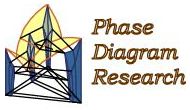|
Phase Diagrams & Computational Thermodynamics
Solder Systems |
It is desirable, where practicable, to remove lead-containing components from commercial products for environmental considerations. One area where lead is extensively used is in lead-based solders. New lead-free solders must have the appropriate melting temperatures and freezing ranges, in order to be compatible with existing equipment and components. A thermodynamic database can be used to predict these properties and also show the effects of non-equilibrium solidification. The results from these predictions can be used to eliminate candidate solder alloys for which the calculation revealed unsuitable freezing temperature and range from further testing. Different types of calculated systems must be distinguished:
This webpage contains a collection of calculated binary and ternary systems that are relevant to solders. The thermodynamic descriptions of these systems are compiled in database files which can be downloaded. Examples for the application of these systems can be found in our papers on solders. Binary Systems
Ternary Systems
Thermodynamic Database (Sn - Ag - Bi - Cu - Pb)Condensed Phases
*Major species are printed bold face Thermodynamic Database Files
| |||||||||||||||||||||||||||||||||||||||||||||||||||||||||||||||||||||||||||||||||||||||||||||||||||||||||||||||||||||||||||
|
|
|
Materials Science and Engineering Division | metallurgy@nist.gov Home | Personnel | Research Opportunities The National Institute of Standards and Technology (NIST) is an agency of the U.S. Commerce Department. Privacy policy / security notice / accessibility statement / Disclaimer / Freedom of Information Act (FOIA) / No Fear Act Policy / NIST Information Quality Standards |

